Albania, with its Mediterranean climate, varied coastline, and ancient ruins, attracts tourists invariably. The prices are also of great value – lower than in other European tourist destinations. People come here to relax on the beaches, swim in the sea or the numerous lakes, go hiking in the mountains, or rafting on the rushing rivers. Historical sites in Albania include ancient Christian temples and mosques, ancient amphitheaters, and medieval fortresses.
In this article, you’ll find 16 places to discover all the secrets of this multifaceted country:
1. Butrint National Park
Butrint is an ancient settlement that dates back to Antiquity: in the 7th and 6th centuries BC a Greek colony was established here. It flourished for over a thousand years and survived the raids of the Vandals, the Goths and the Slavic tribes. In the 15th century the settlement was abandoned. Archaeological excavations began in the 1920s and unearthed well-preserved structures from different periods. There is now a conservation museum in Butrinti.
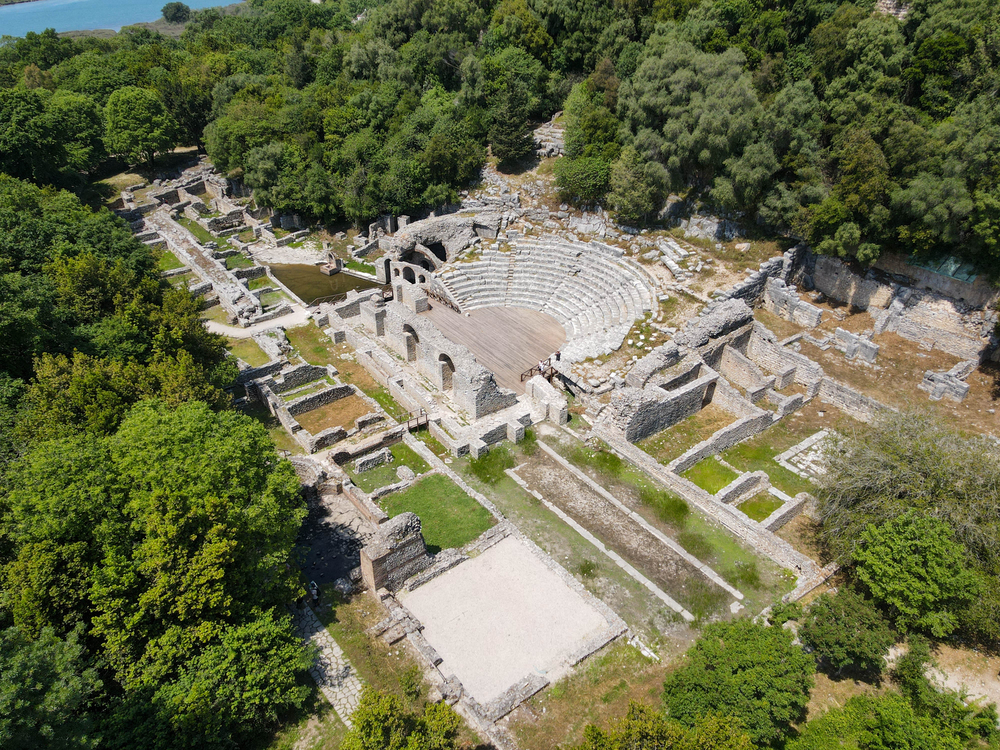
Several archaeological sites are available to view, including the ruins of an ancient Greek acropolis; a 3rd century BC theater; a 6th century AD baths and baptistery; and a 19th century Turkish fortress.
The park is accessible by road from the resort of Saranda, about 160 km from the capital Tirana.
2. Berat
A town on the Osum River that UNESCO has taken under its wing and where Albanians believe the best is produced. Seriously: if you try to ask the locals what kind of wine, olive oil or meat to buy, you will 99% of the time get the answer ‘from Berat’. It is the most orthodox city in the country. It is also called the “City of a Thousand Windows” and the architectural appearance of Berat reminds many of the Ligurian coastline of Cinque Terre.
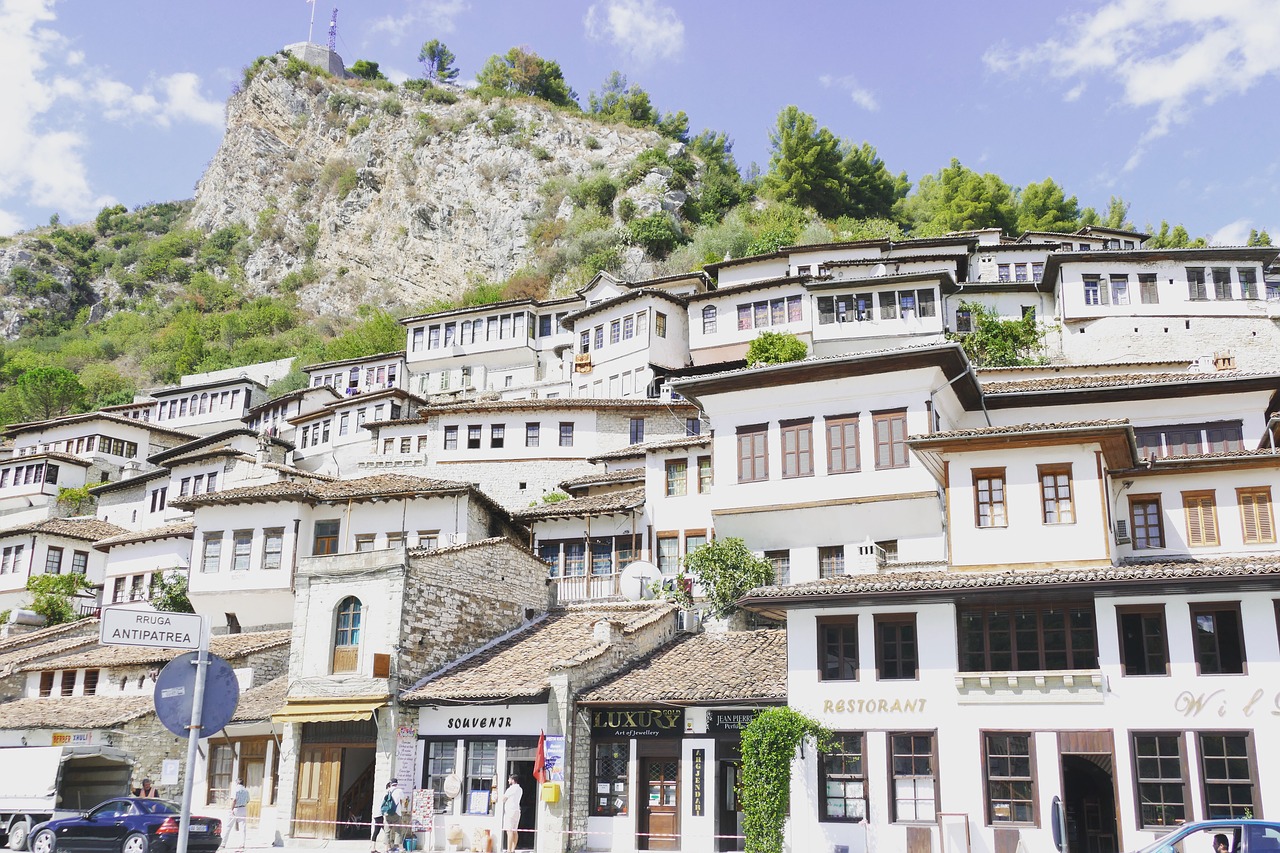
Take a walk through the historic centre of Berat to see the city’s most interesting sights:
- the 13th century fortress;
- the stone bridge of Gorica, built in the 18th century;
- several ancient Christian churches and mosques;
- houses decorated in the characteristic local style with large windows and staggered storeys.
There are also ethnography and iconography museums in the town. The developed tourist infrastructure makes it possible to stay in Berat for several days.
3. Gjirokastra
Gjirokastra (another variant of the name is Gjirokastra) is a museum town in southern Albania, situated on the banks of the Drina River. Its history dates back to the Greek settlement of Agriokastra, which appeared around the 1st century BC. The town was also part of the Roman Empire and Byzantium, and in the Middle Ages it came under the rule of the Ottoman conquerors. It has been a UNESCO World Heritage Site since 2005.

When is better go to AlbaniaThe main attractions of Gjirokastra are:
- the 12th century fortress, which houses the Museum of Arms;
- Ottoman-era mansions;
- an ancient mosque;
- christian churches.
Tourists can stroll through the historical center of the city. In addition, the surroundings of Gjirokastra have many picturesque places for hiking, and the suburb of Libovo is known for its cheese dairies.
4. Pristine beech forests in the Gashi River area
When choosing what to see in Albania, take note of the country’s natural attractions. One of them is the beech forests growing in the Gashi River area, a UNESCO natural heritage site (as part of the Carpathian Beech Forests site).
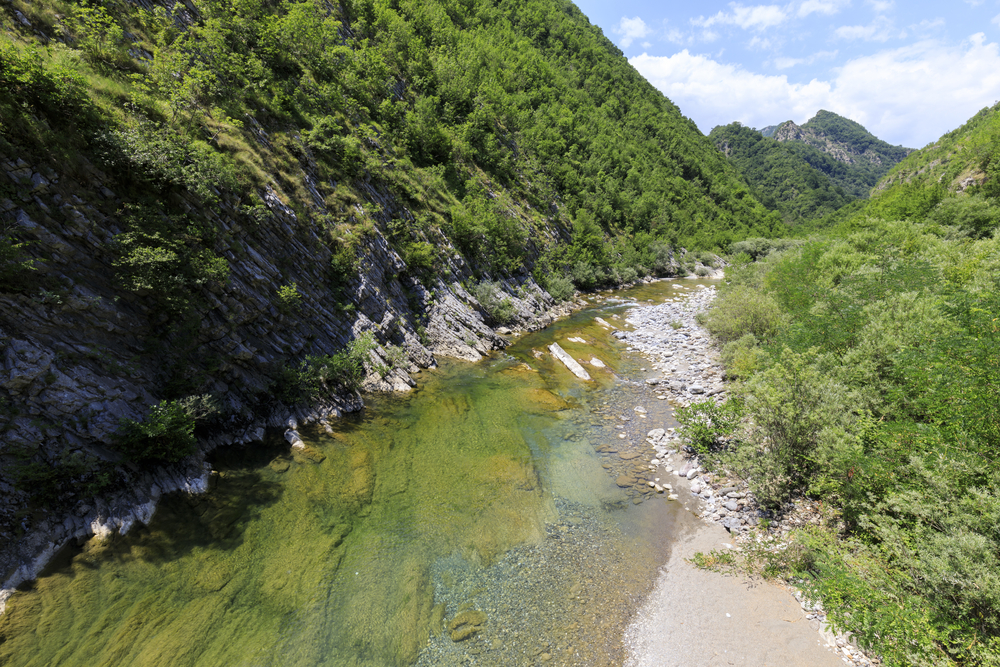
The area by the Gashi River is a nature reserve. This allows the forests to be kept untouched: European beech trees growing in natural conditions can be seen here. Hiking trails through the protected groves are available to tourists.
5. Lake Ohrid
On the border with Macedonia is a unique natural site – Lake Ohrid. It is similar in origin to Lake Baikal and also boasts an impressive depth of 288 meters.
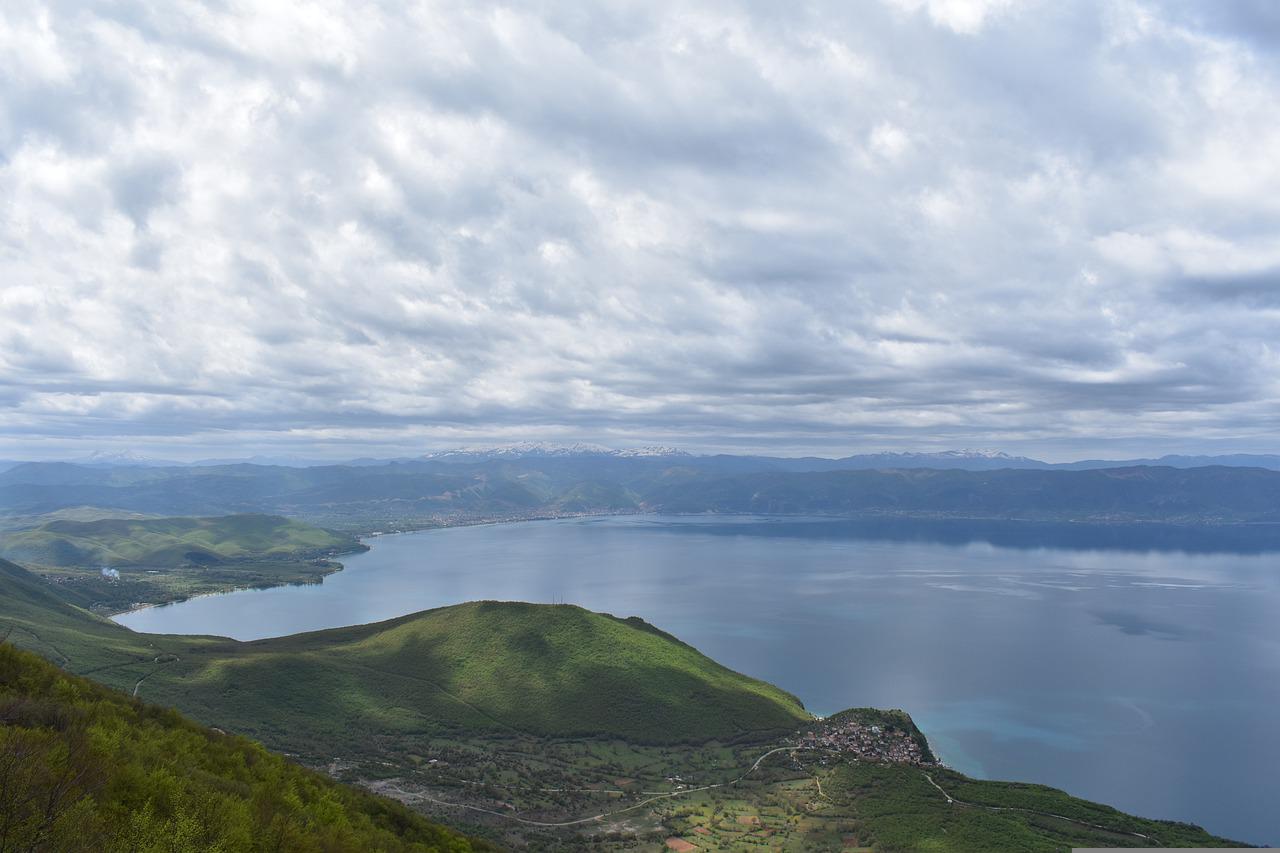
Lake Ohrid is unique in the entire Balkan Peninsula. Scientists call its ecosystem unique: more than 200 endemic (uncommon elsewhere) species live in and around the lake. Regular tourists come here to admire the beautiful scenery, swim in the clear water, and relax on the beaches. The tourist center is the coastal town of Pogradec.
6. The ancient city Apollonia
Apollonia was founded by Greek colonists near the coast of the Adriatic Sea, on the Vhosa River, in the 6th century BC. During Roman times, the Egnatia road, an important trade route that maintained the high economic importance of the settlement, ran through it. However, by the end of the ancient period the town had been abandoned and archaeological excavations at the site did not begin until the twentieth century.

Today, the ruins of ancient Apollonia are one of the country’s most interesting archaeological sites. Here you can see large, well-preserved fragments of an ancient theatre, a 6th century BC temple, sections of paved roads and dwellings, baths, a well and many other objects found by archaeologists. Tourists can walk around the entire complex on their own or with a guide, there is a charge for entry.
7. Bashtov Fortress
The ancient fortress of Baštov is located in the central part of the country, not far from the Bay of Durre. It was founded in the 15th century by Venetian merchants who used it as a stronghold for trade. The stone fortifications are well preserved to this day and are one of the biggest tourist attractions in the region.

Unlike many other medieval fortresses, which were situated on high ground, the Baštov fortress stands in a field. Tourists can stroll around the courtyard and explore the round towers and citadel walls. There are several convenient viewing platforms from which one can see Durres Bay and other surrounding areas.
8. Basse-Selza
Basse Selca is a historical settlement in the east of the country, near Lake Ohrid and the modern town of Pogradec. Archaeologists believe that people lived here as early as the Bronze Age. During the Antiquity period, the settlement became a military fortress and trade center, which existed until the 6th century AD.

Basse Selva is particularly interesting for its archaeological finds. The main attraction is the tombs of Illyrian princes dating back to the 3rd century B.C. They have been well preserved to this day: the original decoration of the funerary structures, including the columns of the Ionic order, can be seen.
9. Shkoder
Shkoder is one of the most non-tourist and yet most Albanian of cities. It is also one of the oldest in Europe: it is said to date back to antiquity, around the 4th century B.C. It is part of the famous Lake Skadar, which Albania shares with Montenegro, only 10km from the border.
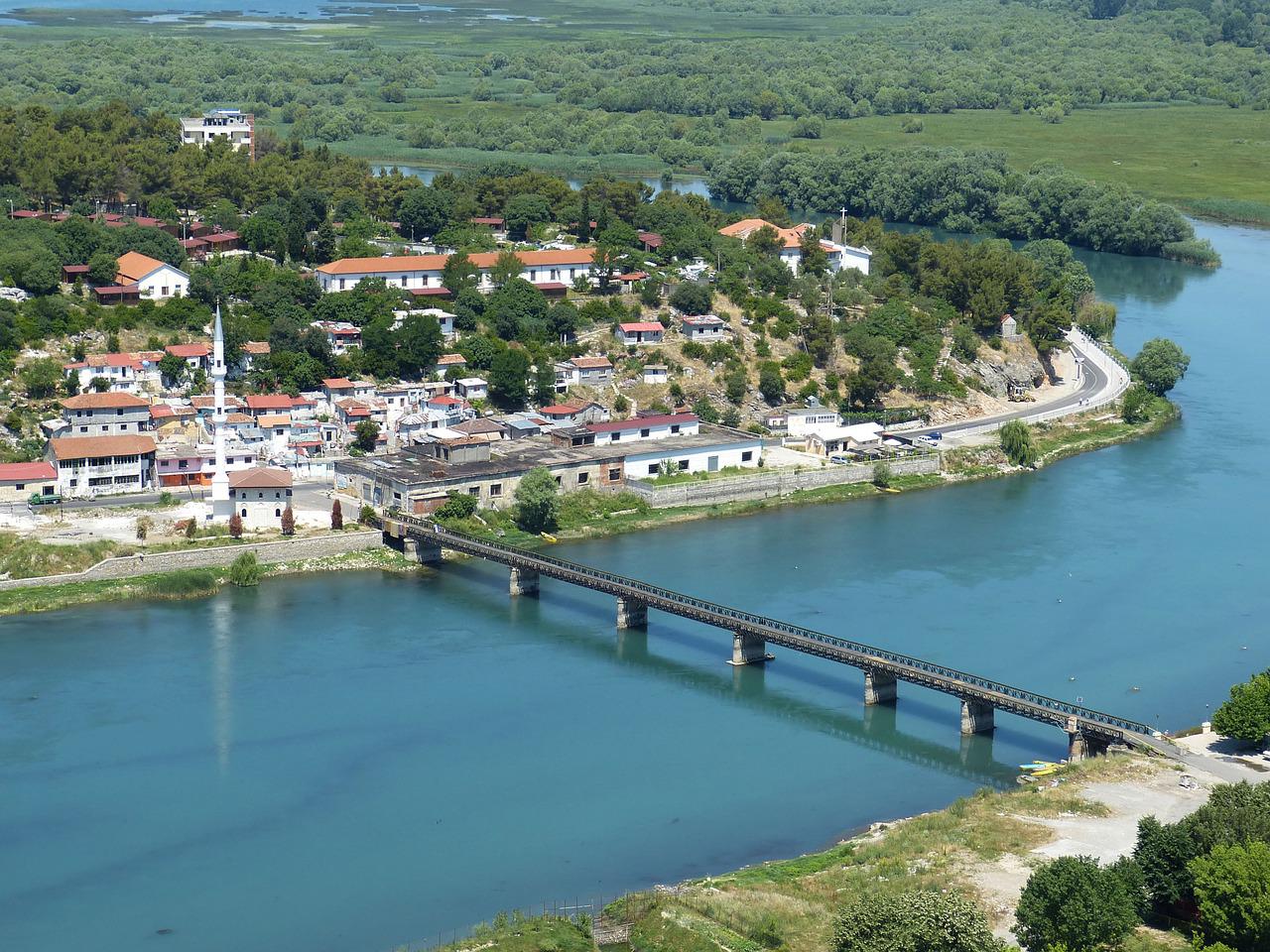
Shkodra is home to the largest number of Albanian Catholics. There is a point near the town square of Sheshi Demokracia from which the Orthodox Cathedral of the Nativity, the Catholic Cathedral of St Stephen and the Abu Bakr Mosque are all visible at the same time. The Albanians’ tolerance towards the representatives of other confessions was noted even by the Pope in 1999. And the hero of an Albanian proverb says: “What difference does it make what religion? God is one, I believe in Albania!”.
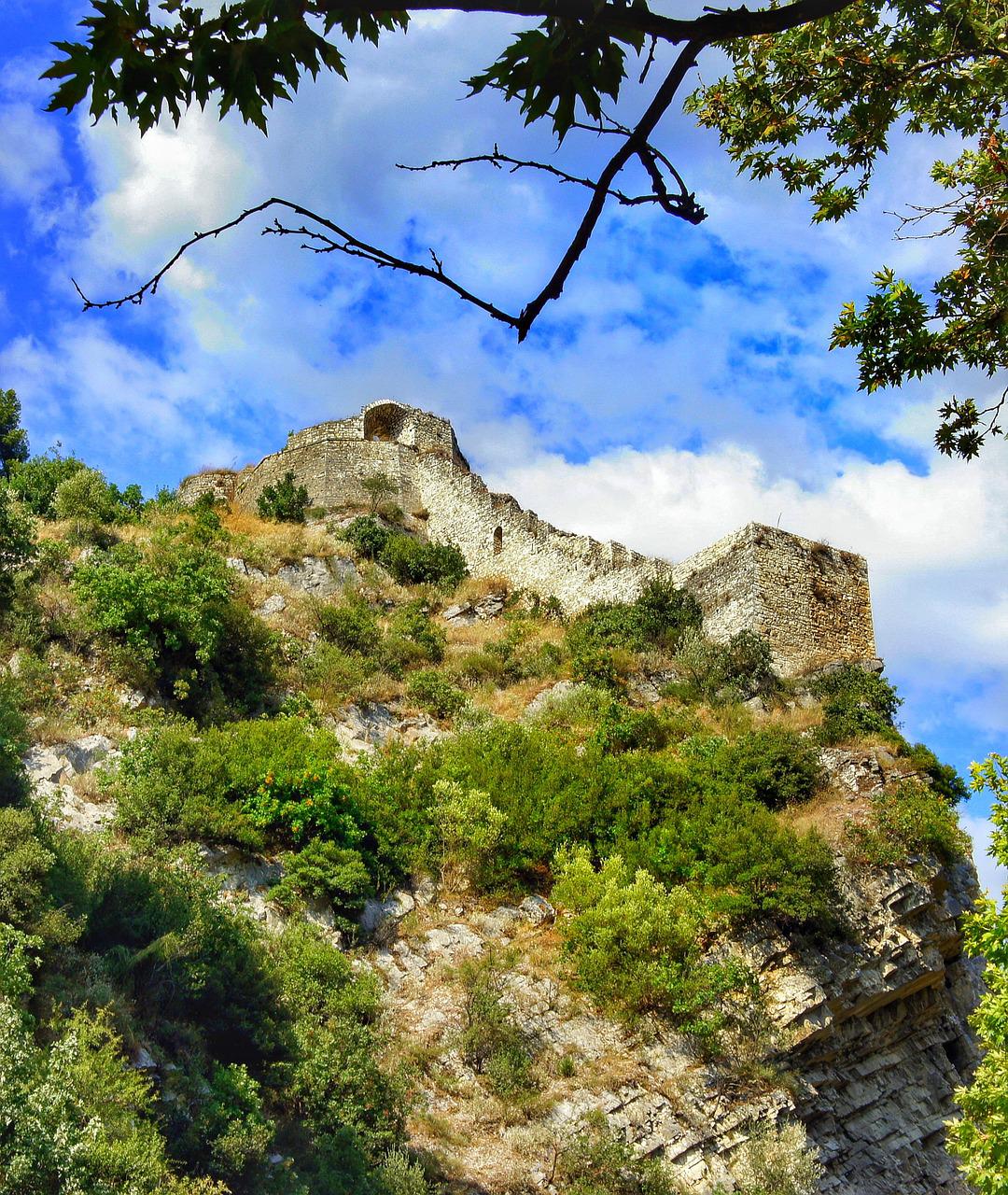
In the town you can walk through the town centre, which dates back to the 19th century, walk up the hill to the fortress of Rosafi, built by the Illyrians (ancestors of the Albanians) in the 4th century, see the Lead Mosque, which has survived decades of imposed atheism in its original form and have lunch in one of the many restaurants serving fresh fish that were splashing around in the lake five minutes ago.

One of the most interesting Albanian bridges on the outskirts of Shkoder is the Mes Bridge, which connects the banks of the River Cyrus and was built in the 18th century by the Ottomans to provide a convenient connection between Shkoder and the surrounding settlements.
10. Lago Skadar
Lake Skadar (Albanian: Shkoder) is the largest lake in the country and the entire Balkan Peninsula. Only a third of the body of water is in Albania; most of the lake belongs to neighboring Montenegro.
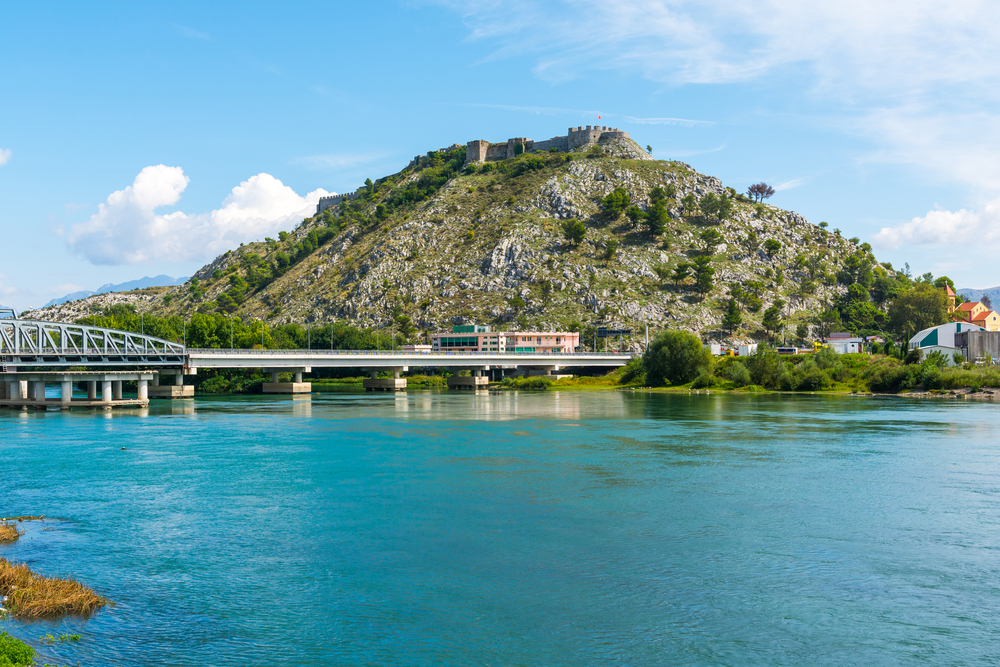
Shkoder is a picturesque lake surrounded by mountains and valleys. You can go boating or fishing on it. On the Albanian side of the lake is the town of Shkoder, home to the fortress of Rozafa and other tourist attractions.
11. Lake Coman
The lake is an artificial body of water. It can be compared to views of Thailand (because of the characteristic rock formations covered in greenery) or Norway (the view from a boat is reminiscent of Norwegian fjords).
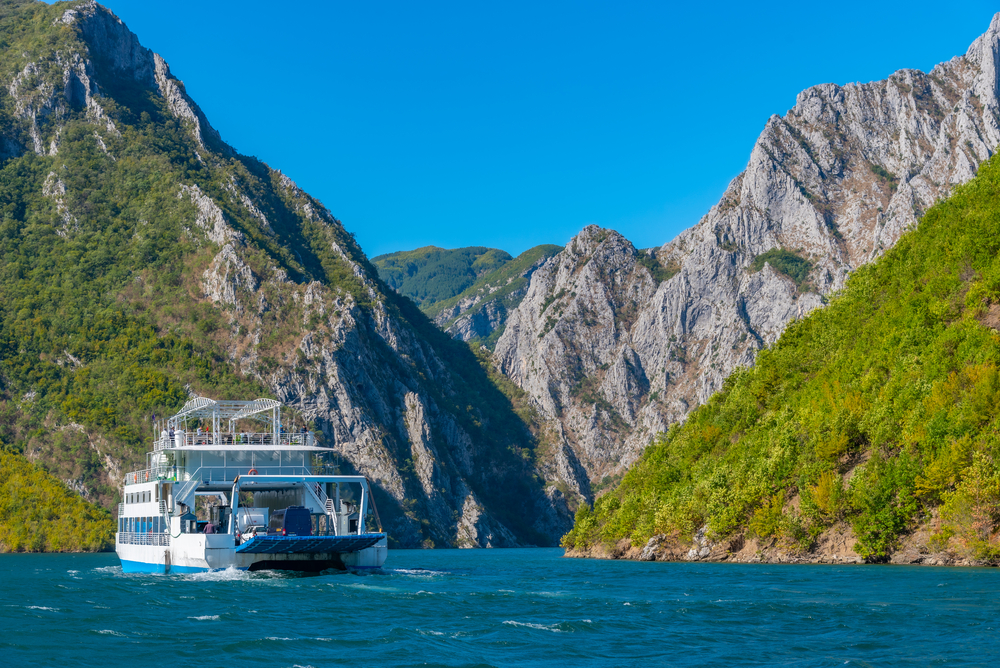
A reservoir located in northern Albania can be a great place for those who would like to explore the local Cursed Mountains. Although it’s called a lake, it’s more like a wide river that can be crossed by ferry in two hours. The road leading to the ferry’s departure point is again quite challenging – gravel intertwined in places with asphalt, not necessarily of good quality. Rocks, serpentines, and potholes are a constant element of this route.
12. National park on top of Mount Daichi
The national park cableway at the top of Mt Daichi. Albania has many mountains, so you can find a scenic peak to climb anywhere in the country. You don’t even have to go far from the capital – the administrative center of the state, Tirana, is at the foot of Mount Daichi. The slopes and the top of the cliff are part of a national park covering almost 30 hectares.
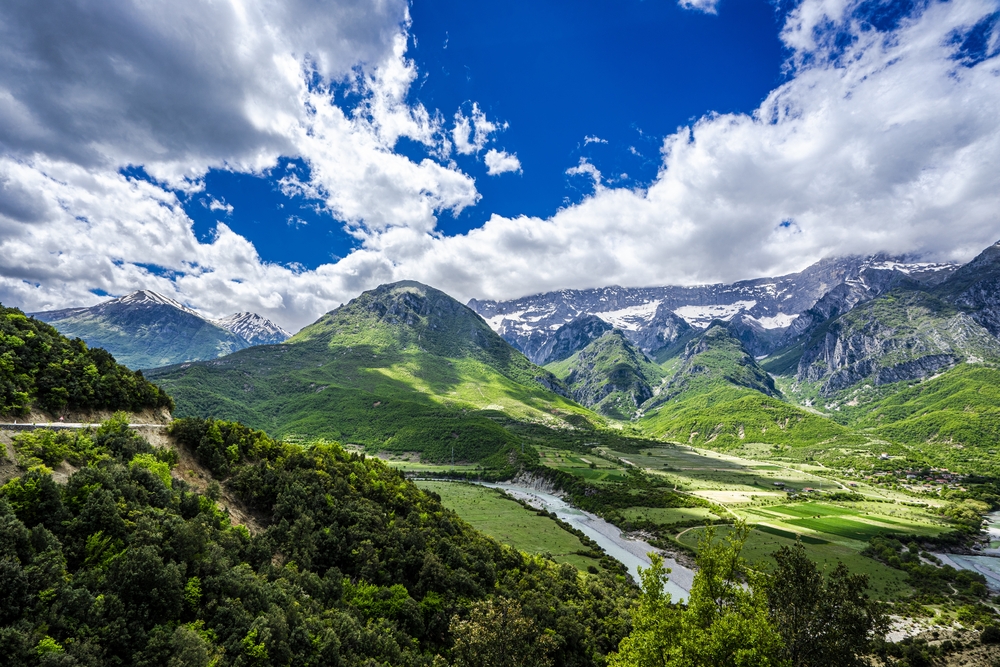
The slopes of the mountain are densely forested with pine, beech, oak and other trees, with many colorful flowers in spring and summer. The forests recede towards the top, 1,613 metres above sea level, so the views of the surrounding area are excellent. There are hiking trails along the slopes of Daiti, and some sections can also be reached by car (a paved road reaches the Fuscha y Daiti Plateau) or by cable car.
13. Sazan Karaburun National Park
Visitors to Vlore can take a special excursion by boat to see things that are not open to everyone. For example, the uninhabited island of Sazan was previously off-limits to visitors because it was a military base. NATO (Albania is a member of NATO since 2009) still conducts its exercises there, so even now one cannot simply sail there – you need a special permit. The uninhabited Karaburun Peninsula (Turkish for ‘black nose’) is not as secretive, but no less beautiful.

The national park is good for divers: turtles, dolphins, sharks and other underwater creatures can be seen while diving, as well as the remains of Greek and Roman shipwrecks and warships already sunk in the 20th century. Boat and boat tours are also available.
14. Blue eye
A real Albanian wonder is the multicoloured Blue Eye karst spring. Its depth is still a mystery to explorers: they were only able to dive down to 45 metres, but beyond that the spring was neither hospitable nor friendly: the water springs there under great pressure. The temperature of the spring (or rather the 18 gushing springs draining into the lake) is +13 degrees all year round.

It is best to arrive at the Blue Eye as early as possible in the morning so that you can meditate alone with nature while there are no tourists. You can also have a meal in a restaurant near the spring, as Albania is always delicious. And be sure to visit the nearby town of Gjirokastra, which has preserved its Ottoman-era face. A UNESCO World Heritage town, it is the birthplace of the Albanian ruler Enver Hoxha.
15. Vlorë: Albania for snorkeling enthusiasts
Vlorë (in Albanian Vlora) is an important tourist and economic centre on the Adriatic Sea, formerly Albania’s first capital. Tourists love to relax on the local pebble beaches, often tucked away in coves. The clearest waters are sure to please snorkelling enthusiasts. Vlora’s unique location is complemented by a wide range of beachfront hotels and numerous pubs serving local cuisine. The town has had a museum dedicated to its history since 1962.

The museum’s exhibition consists of several halls that tell the story of different periods of Albanian history. There are archaeological finds from the Antiquity period, including artefacts from the ancient Greek colony of Avlon and other nearby cultural centres. There are also sections devoted to medieval history and the struggle for the independence of Albania in the early 20th century.
16. Korçë
Korçë (in Albanian Korça) is a city in the south-east of the country with picturesque historic neighbourhoods and a sedate, quiet life. One of the city’s main attractions is the Church of the Resurrection. The church was erected in 1992 for the locals, many of whom are Orthodox Christians. Why visit: The cathedral is designed in a neo-Byzantine style and is reminiscent of early Christian temples. The facades are decorated with decorative details and the colour scheme includes shades of pink, blue and brown. The interior is also noteworthy: the cathedral has a large carved altar and is decorated with the Albanian eagle, one of the main symbols of the state.
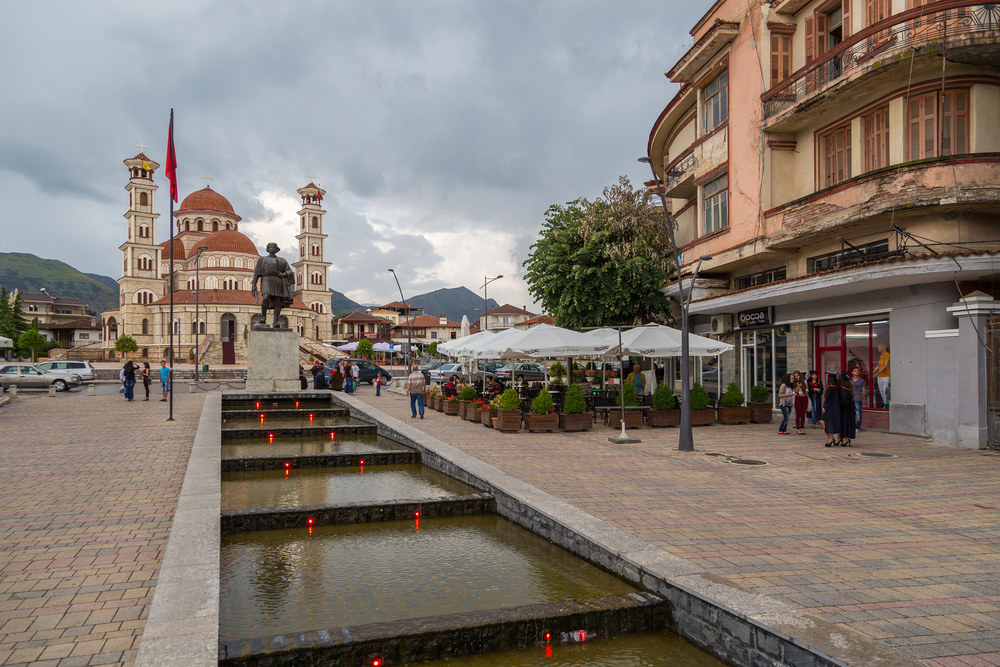
The town of Korca has another interesting museum to learn about Albania’s history, the Museum of Medieval Art. Its collections tell the story of the Middle Ages through art and other exhibits.
Walk the halls of the museum and you can see icons from the Byzantine period and later eras: the iconography collection has around 6,500 items and is considered to be one of the largest in the world. There are also medieval jewelry, textiles, books and more.
Read articles about attractions in Tirana, Durres y Saranda.